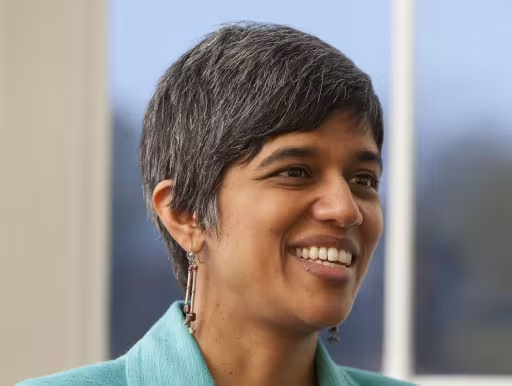The shared medical appointment
Building the case for a major shift in primary healthcare
Please enter a keyword and click the arrow to search the site
Or explore one of the areas below

For many of the world’s healthcare providers navigating the long tail of the Covid-19 pandemic, resourcing challenges are acute: budgets remain constricted and cost-cutting a major priority even as global inflation is driving up the costs of supplies. Meanwhile for patients, waiting times are only set to increase—exponentially, in some geographies. The UK’s National Health Service is facing an estimated funding shortfall of £7bn in 2023; a situation that will see already overstretched hospitals, units and staff struggle to manage any surge in patients requiring medical care.
The British Medical Association warns of immense backlogs for non-urgent care that have seen the median waiting time for treatment rise to 14.3 weeks; almost double the pre-Covid median of just over seven weeks in 2019. Just under half of all patients in need of non-urgent treatment in the UK can expect to wait 18 weeks or more. And it’s not just the NHS. In the States, a recent survey of doctors’ offices in 15 major metropolitan areas reveals that patient waiting times have increased by 24% since 2004.
While telemedicine offers one solution, it is not without limitations. For one, access to reliable internet or phone services are a fundamental if not uniformly accessible requisite. Patients also need to be adept enough in language and communication skills to describe their symptoms such that clinicians can make full and accurate diagnoses. As such, the World Health Organization has taken a measured stance in recommending telemedicine, under the proviso that it “complements, rather than replaces, face-to-face delivery of health services.”
There is, however, another approach—one that is just as radical as virtual healthcare—that is proving to significantly improve benefits to patients and healthcare providers while simultaneously reducing costs.
Kamalini Ramdas, Deloitte Chair in Innovation and Entrepreneurship at London Business School, has developed a body of research into a practice that is quietly revolutionising primary healthcare in geographies as diverse as the United States, Australia and more recently, India and the UK.
Shared medical appointments, or SMAs as Kamalini calls them, challenge the convention of one-to-one meetings between medical practitioners and individual patients. Instead, these group consultations convene as many as 12 patients with similar, long-term or chronic conditions to meet together with a specialist physician at the same time.
The Cleveland Clinic, one of the foremost hospital systems in the US, is a pioneer in SMAs having introduced the approach in the management of diabetes back in 1999. Meanwhile, the University of Virginia Health (UVA) System operates a well-established SMA approach with its cardiology patients known as Club Red. In this system, patients can opt for a 90-minute joint appointment with between six and 12 other individuals.
For Cleveland and UVA, SMAs have become normalised in the delivery of primary healthcare across a breadth of disciplines, from pain management to osteoporosis to women’s health to addiction; and this, despite strong initial resistance from patients. Kamalini’ research has shown that driving a cultural shift as big as this is contingent on piloting SMAs in small, controlled settings and clearly communicating the considerable benefits that they deliver—benefits that her work has also helped to pinpoint, quantify and articulate.
Working with the Cleveland Clinic, UVA and other healthcare providers, Kamalini has found that shared medical appointments:
Increase in patient satisfaction
Reduction in patient waiting times
Kamalini is the author of a highly significant body of research in healthcare innovation. Her work on shared medical appointments over the last decade has generated a number of critically-acclaimed papers and case studies, and articles for healthcare industry outlets such as The Lancet, as well as expert pieces for global platforms including Harvard Business Review and The Financial Times.
In 2013, Kamalini brought her research to the Aravind Eye Care System in the south Indian state of Tamil Nadu. Aravind is the largest eye care hospital in the world, treating almost two thirds as many patients as the UK’s NHS in its totality for one hundredth of the cost. From its inception, the hospital had prioritised community outreach, however efforts to expand reach—primarily through eye camps in remote rural locations—had been historically hampered by limited access and a lack of follow-through care and patient support. This research was part-sponsored by the Wheeler Institute.
To read more about the research, please visit here.
Introducting shared medical appointments to over 1000 patients requiring non-urgent care
During her 2013 trip to the facility, Kamalini introduced the concept of shared appointments in non-urgent care for patients and in 2016, a large-scale, long-term trial was established offering SMAs to groups of Aravind patients. Initially, pilots were rolled to groups of five at weekends, but more recently SMAs have been offered to patients during the week.
To date, well in excess of 1000 patients have passed through the programme, and a slew of benefits have been reported and recorded by Kamalini together with her colleagues Ryan Buell of Harvard Business School, and LBS PhD student, Nazli Sonmez.
Improved productivity, quality of service and patient engagement
Among the gains that Aravind are seeing in their experiments with SMAs are:
As Kamalini and her colleagues continue to capture and analyse the benefits of shared medical appointments in Aravind, measuring patient knowledge, satisfaction, medication compliance and future appointment attendance, new lines of enquiry continue to emerge; as well as opportunities to introduce the practice of SMAs in different contexts and settings.
One recent paper published by Kamalini Ramdas and Soumya Swaminathan of the World Health Organization looks at the potential impact of virtual shared medical appointments or VSMAs. Kamalini argues that in rural areas where simple smartphone-powered e-health platforms are already operational, VSMAs could offer an incentive for more physicians to participate and an opportunity to extend reach. India’s eSanjeevani platform could be a prime candidate for this approach; with more than 12,000 practitioners already onboard, VSMAs could function as a buffer for ‘no-show’ patients, while increasing scale and engagement, she believes.
Elsewhere, she has redoubled efforts to engage UK policy-makers and healthcare chiefs in SMA trials at NHS hospitals. She is keen to leverage a grassroots movement involving 250 GP practices around the UK that are already rolling out SMAs to patients. One approach could be to offer shared appointments as a “default,” with the option of a one-to-one consultation should patients decline.
This is precisely the kind of radical new approach the beleaguered UK health system will need to consider, if it has any real hope of delivering on healthcare goals for the next decade.
Kamalini Ramdas

Professor of Management Science and Operations; Deloitte Chair in Innovation and Entrepreneurship
Media coverage
Our research is helping to solve some of society's most challenging questions and concerns.
Our faculty publish over 100 papers and articles every year, many of which are featured in top-ranked business journals. Discover what our researchers are working on and how they are shaping the world.

The study reveals that the motherhood penalty, characterised by reduced earnings opportunities in wage employment due to motherhood status, significantly drives female entrepreneurship, particularly among women facing wage discrimination, offering insights into women's career choices amidst workplace inequality.
LBS faculty: Olenka Kacperczyk

The research shows that judgments of hypocrisy are biased by social motivations, with people more likely to accuse enemies and defend allies based on how they perceive similarities in behaviour.
LBS faculty: Jonathan Berman

Research combining mathematical modelling with data from executive hiring, crowdfunding, and patent applications challenges the assumption that increasing the number of women in application pools will improve gender diversity.
LBS faculty: Isabel Fernandez-Mateo